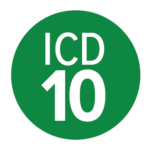Posted by Team KMCU on Oct 8, 2025
Keeping your Chiropractic Practice Healthy
Hot Topics from the KMC University HelpDesk
The ICD-10-CM code set is the foundation of medical billing and documentation, and staying on top of its annual updates is essential for a healthy chiropractic practice. The latest 2025 ICD-10 changes, which take effect on October 1, 2025, introduce new codes, revisions, and deletions designed to provide greater specificity. For chiropractors, this means adapting documentation and billing practices to avoid claim denials and ensure proper reimbursement.
You read that correctly: diagnosis codes are updated every year! Twice a year, the ICD-10-CM Coordination and Maintenance Committee meets to review proposals for new codes and decide on all updates. Updates include adding new codes, deleting existing ones, and revising existing codes, like adding laterality. These updates are then implemented every October. The committee consists of representatives from the Centers for Medicare & Medicaid Services (CMS) and the National Center for Health Statistics (NCHS), which is part of the CDC. These updates are then adopted for routine use across the nation.
For chiropractors, the chapter of codes we must check annually is Chapter 13: Diseases of the musculoskeletal system and connective tissue. Additionally, you should review any other chapters related to the conditions that are diagnosed in your clinic. For example, Chapter 19: Injury, poisoning and certain other consequences of external causes for the sprain/strain codes. CMS posts the changes on their website: https://www.cms.gov/medicare/coding-billing/icd-10-codes.
To prepare for these 2025 ICD-10 changes, take the following steps:
- Check For Updates: Review the chapters and code sets that you use in your clinic for any changes. We recommend checking at least 30 days before the required implementation date of October 1st each year.
- Educate Your Staff: Make sure everyone in your practice, from the front desk to your billing team, understands the new codes and their effective date.
- Update Your Software: Ensure your electronic health record (EHR) and billing systems are updated with the new ICD-10-CM code set.
- Refine Your Documentation: Get in the habit of documenting with a higher level of detail. Specify the location, laterality, and specific symptoms for each diagnosis to ensure you are ready for the new codes.
Why These Changes Matter
Using the wrong codes can lead to a few problems, including claim rejections, payment delays, and even compliance audits. These new, more specific codes are a win-win: they provide clearer data for insurance companies to determine medical necessity, give you the tools to better justify your care, help improve the accuracy of patient records, and finally, they support better communication with other healthcare providers.
Dr. Erin Stubblefield graduated from Palmer College of Chiropractic in Davenport, IA in 2006. After practicing privately, she transitioned to Chiropractic education for 13 years before joining KMC University as a Specialist in 2024. Currently, Dr. Stubblefield is the owner of Sunflower Consulting, LLC, a healthcare consulting and practice coaching group. Dr. Stubblefield partners with KMC to provide accurate, current, and compliant information. For further information, you can reach her at drerin@kmcuniversity.com.








Comments on Don’t Get Left Behind: Navigating 2025 ICD-10 Changes